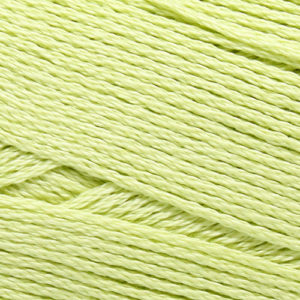When purchasing various items of clothing, you may come across the term “mercerization.” It refers to the chemical treatment of fabric, but few understand the nuances of the process. Its features can be found below.
What is mercerized wool?
 Wool cannot be mercerized, despite popular misconception. For synthetics and mixed fibers, chemical treatment does not cause harm, but rather improves their properties. The fact is that wool does not contain cellulose. Natural fabric consists of keratin. This is a fibrillar protein that is “chains” of amino acids.
Wool cannot be mercerized, despite popular misconception. For synthetics and mixed fibers, chemical treatment does not cause harm, but rather improves their properties. The fact is that wool does not contain cellulose. Natural fabric consists of keratin. This is a fibrillar protein that is “chains” of amino acids.
Alkali has a detrimental effect on wool. The material will dissolve into the substance. It is enough to remember what careful care is recommended for things made from natural materials. Woolen clothes must be washed with mild detergents so that the sweater does not lose its shape.. It is best to use hair shampoo to clean the material.
Interesting! The name “mercerization” comes from the name of the chemist John Mercer, who invented this processing method.
So what is mercerized wool? This is nothing more than an analogue of wool, a synthetic yarn processed through mercerization.
Mercerization - what is it?
Mercerization is a type of pre-treatment of various cellulose fiber fabrics, as well as cotton materials. This process is also used to make viscose. Both yarn, fabric and clothing can be processed. The process has no difficulties.
Mercerization sequence:
 the yarn is placed in an alkaline solution of 18–23% for several minutes, due to which the threads swell, take on the correct straight cylinder shape, and become smooth;
the yarn is placed in an alkaline solution of 18–23% for several minutes, due to which the threads swell, take on the correct straight cylinder shape, and become smooth;- the fiber is then washed and pulled using torches to remove fluff and excess lint from the surface.
Important! After mercerization, the material becomes smooth, reducing the risk of pilling.
The procedure is carried out at room temperature 15–18 degrees. When making embroidery threads, fabric goes through several processing stages. First, the fiber is dipped into the alkali solution. And the second time the finished threads are processed. The resulting material is durable, soft, and smooth. The improved analogue is easier to paint, and the resulting color is richer and more durable.
During the procedure, the interaction of cellulose and alkali is carried out. As a result of such contact, cellulose alkali is formed. When the fiber absorbs the solution, it also absorbs water. Thanks to this, the yarn increases in size. If the original fiber is dry and twisted, then after processing its shape changes. The threads become straight and smooth.The fabric remains in this position.
Mercerization is not a new technology. Back in 1844, the first studies were carried out where John Mercer experimented with cotton. But at that time, none of the manufacturers were interested in this process. It took another half a century for processing to begin to be actively used in the manufacture of clothing and other fabric products.
How is it different from natural wool?
 Advertising for mercerized wool can be found everywhere. But alkali treatment has nothing in common with this material. The common term here refers to a completely different process. In fact, the fibers are coated with a thin layer of silicone polymer. Thanks to this, the properties of the fabric are improved.
Advertising for mercerized wool can be found everywhere. But alkali treatment has nothing in common with this material. The common term here refers to a completely different process. In fact, the fibers are coated with a thin layer of silicone polymer. Thanks to this, the properties of the fabric are improved.
Distinctive features of “mercerized” wool:
- the fabric is smooth, light to the touch;
- the material is easy to care for;
- the fiber is easier to process.
The manufacturer is trying to make it clear to the buyer that these clothes are not made from ordinary wool, but from its improved analogue, therefore it uses simplified designations. Treated wool is more expensive than natural wool.


 the yarn is placed in an alkaline solution of 18–23% for several minutes, due to which the threads swell, take on the correct straight cylinder shape, and become smooth;
the yarn is placed in an alkaline solution of 18–23% for several minutes, due to which the threads swell, take on the correct straight cylinder shape, and become smooth; 0
0





